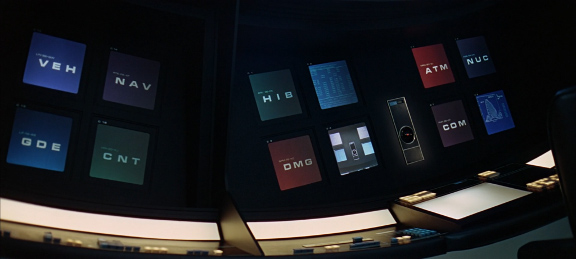Editorial | Radical moderns
Abstract
RADICAL MODERNS
Revisiting the concept of Modern and accomplishments of modern avant-garde is an old idea at Nomads.usp. Besides having produced several studies on architecture, cities and ways of living in Brazil and the world, at the period from the late nineteenth to mid-twentieth century, many of the theoretical and projective references of all other projects have their roots there.
What is more charming when examining this period is the courageous and defiant attitude of questioning, searching for broadening limits as a common denominator of radical moderns in various areas of knowledge. In cinema, music, visual arts, architecture, literature, design, fashion, and even in the way of writing history, the achievements of the first half of the twentieth century exhibit often irreverence simultaneously competent, consistent and consequent that has become perhaps rare since then.
Indeed, it is curious to notice that the profile of many of those who study today modern avant-garde is absolutely conservative, resistant to changes and renovations and longing for bygone times. Exactly the opposite of the personages they study. Radical moderns approached by V!RUS Journal in its twelfth edition were, in general and in Brazil in particular, people extremely open to what was happening in the world, avid readers of magazines that constitute privileged information channels, great travelers, curious about new developments. They were interested in transdisciplinary processes, makers of new techniques, inventors of new processes, contributing to review both theoretical thinking and ways of doing in many areas of knowledge.
In this issue, we have the great pleasure to offer our readers a set of texts and images that discuss various aspects of the Modern, located in the time frame between the beginning of the so called Modern Times, during the Renaissance, and today.
Critical readings and conceptual reexaminations are presented by Otavio Leonidio [THE FOSTER-EISENMAN COMPLEX], Flávia da Costa and Rafael Brandão [ON MODERN PROPOSITIONS IN CONTEMPORANEITY: TO OVERCOME OR TO RESCUE?] and in the interview with Carlos Martins, by Marcelo Tramontano [MODERN QUESTIONS, RADICAL QUESTIONS]. A reflection on the relationship between Modern and Landscape is proposed by Luciana Schenk [MODERN AND LANDSCAPE: POSSIBLE CONTACTS].
The city in comics is the object of Tania Cardoso study [A DREAM BORN IN THE METROPOLIS: CONSIDERATIONS ABOUT THE MODERN CITY IN LITTLE NEMO IN SLUMBERLAND]. The city is also read by the art lenses, in the text of Maria Fernanda Vegro [THE ARTWORK NOSSO LAR - BRASILIA AND THE MODERN MOVEMENT: PARADISE OR PURGATORY?]. Art and architecture are approximated in Almeida Rafael and Fabio Lopes article [CRITICAL PERSPECTIVES BETWEEN ART AND ARCHITECTURE: MODERN IDEAS SEEN THROUGH DAN GRAHAM'S INVESTIGATIONS].
Relations between Modern and cinema are discussed by Denise Vieira and Ana Elizabeth Medeiros [LE CORBUSIER FINDS THE SLEDGEHAMMER: BODY, SPACE AND MODERNITY IN THE FILM THE MAN NEXT DOOR] and Marcelo Tramontano [SPECIES OF SPACES: NOTES ON A POTENTIAL EXERCISE], who also explores connections with literature. A reflection about photographs of a modern home is proposed by Ana Ottoni [THE BRUTALIST RUIN].
Four articles deal with spaces of dwelling, a central theme to modern architects. In one of them, Silvia Pina and Natalia Ranga revisit housing complexes [THE DISTINCTIVE VIEW FROM IAPS AND THE MODERN HOUSING SITING DESIGN], and another three deal with modern houses: they are the works by Ana Sofia Silva [DOMESTICITY AND SURVEILLANCE: THE MELNIKOV’S HOUSE EXAMPLE], by Ana Elísia Costa and Mariana Samurio [PA HOUSE: BETWEEN PAULO MENDES DA ROCHA AND METRO ARCHITECTS], and by Denise Monaco dos Santos and Andressa Martinez [IMAGES OF A CERTAIN MODERNITY: KLABIN HOUSE IN CAMPOS DO JORDÃO, INSTANCE OF ARCHITECTURAL EXPERIMENTATION].
The modern built heritage is studied from the point of view of the contribution of moderns to consolidate the concept of preservation in Brazil, by Ana Lucia Meira [MODERNISTS AND THE CHOICES OF THE PAST IN SOUTHERN BRAZIL], in examining achievements in urban areas, by Celma Vidal [EXPERIENCES OF MODERN IN BELEM: CONSTRUCTION, RECEPTION AND DESTRUCTION] and in a documentation experiment, by Erivelton da Silva [THE HIDDEN PETROPOLIS MODERNISM].
Digital media are covered in two texts: one related to electronic art, from Karla Brunet [MODERNIST ECHOES IN ELECTRONIC ART] and the other on the current status of media art, by Alessio Chierico [MEDIUM SPECIFICITY IN POST-MEDIA PRACTICE].
Two studies have addressed great modern Brazilian radicals. In one of them, Adelia Borges reads the path of Santos Dumont from the design perspective [SANTOS DUMONT: THE FLYING POET], and on the other, Renato Anelli brings an aspect of Lina Bo Bardi design process [A FLOWER BETWEEN THE STONE AND THE CRYSTAL].
The graphic design of this issue refers on the film "2001, A Space Odyssey" directed by Stanley Kubrick in 1968. The film discusses the man-machine relationship at the time that computerization began to be part of everyday life in many places of the world. With a flawless and surprisingly contemporary design and art direction, the film registers much of the way the future was imagined in the 1960s, by displaying various objects, technologies and equipment that have become commonplace a few decades later. The palette of colors, fonts and graphic design of V!RUS 12 pages evoke the HAL 9000 computer control panel, as a citation to the relevant research in design, technology and ways of life that underpins the film, but also as a tribute to this great work of documentation of a modern and radical future.
We hope this issue of V!RUS about modern radicalism contributes to the debate on the necessity and urgency of questionings, which characterizes its legacy, inspiring our readers in their reflections on their achievements in their lives.

Control panel of HAL 9000, in the movie "2001, a space odissey". Source: Typeset in the Future. Available at: < http://bit.ly/28Wu1tz . Accessed 06.07.2016.




